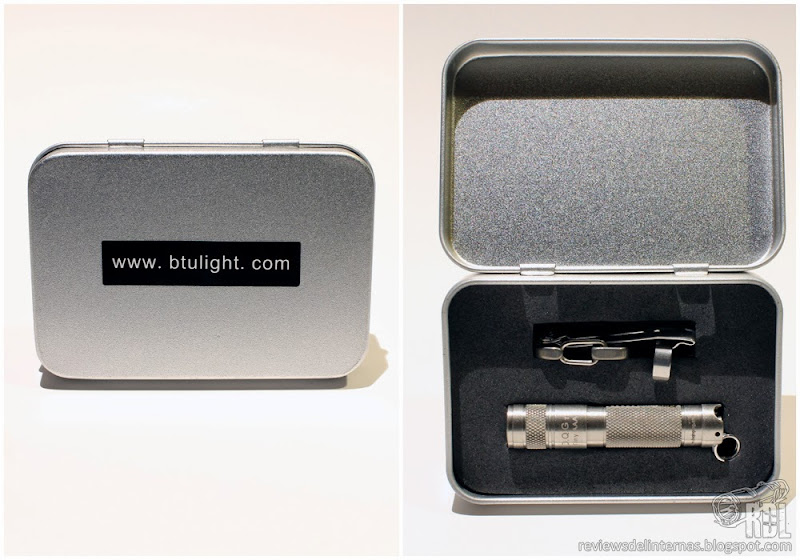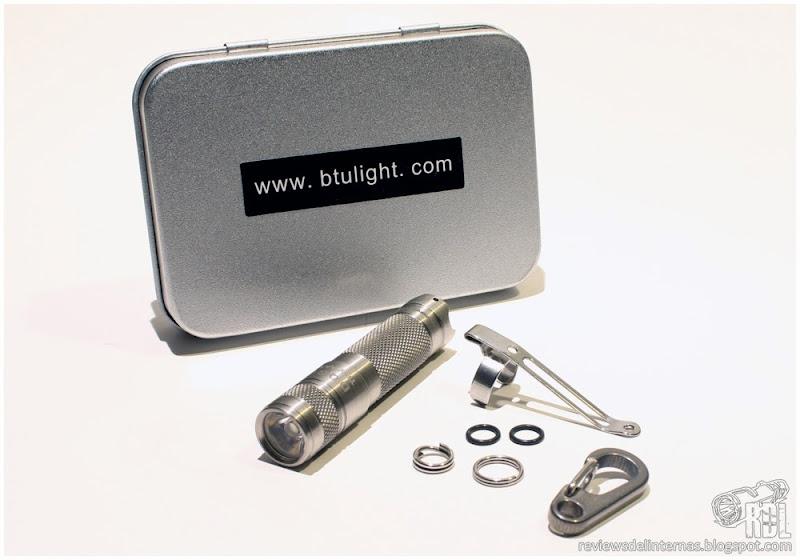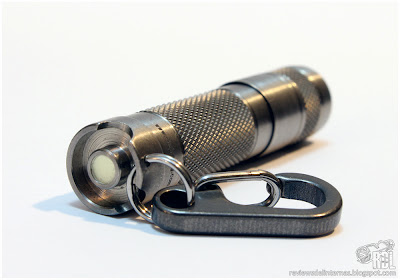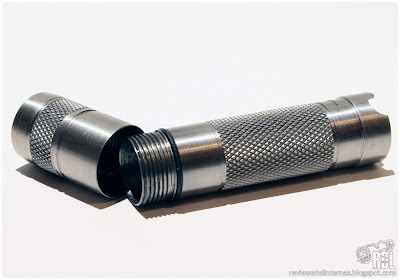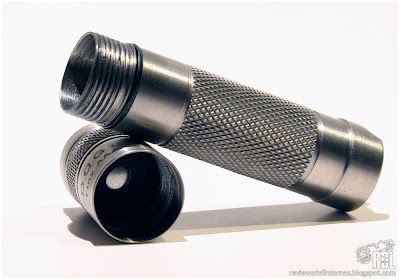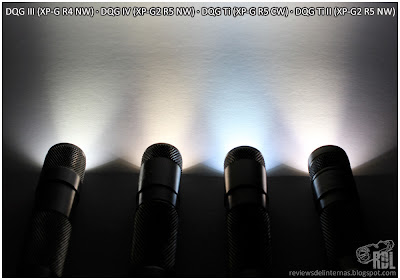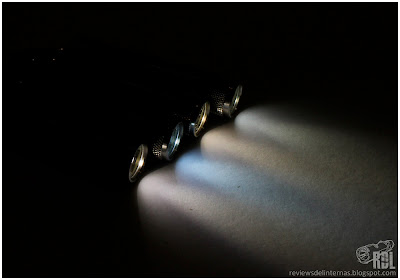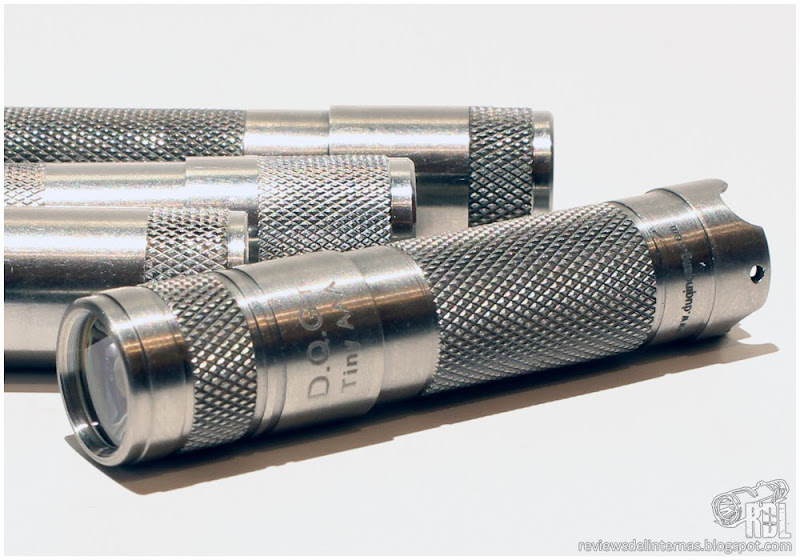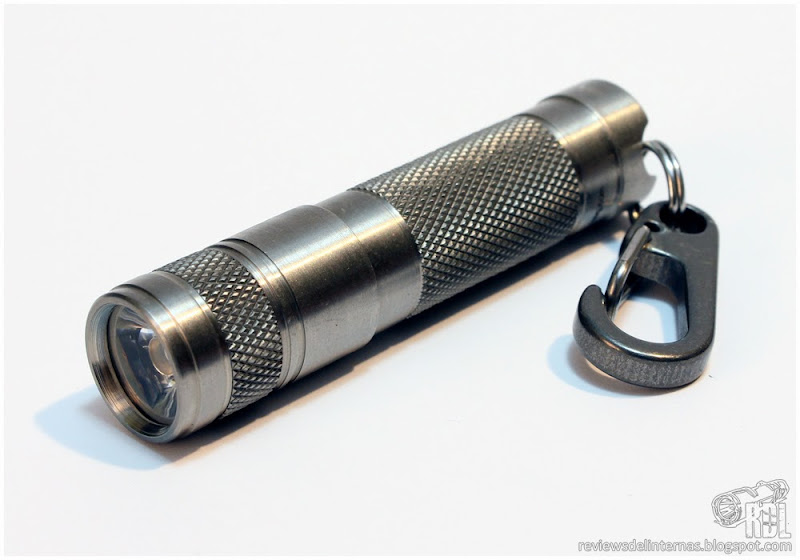
DQG TinyAAA Ti II
LED : CREE XP-G2 R5
Battery : 1 x AAA / 1 x 10440
Modes 2 ( Low, High ) without Memory
Switch: Twisty
Date: January 2014
Links :
CNQG / RdL / Thread in ForoLinternas
INTRODUCTION:
The TinyAAA range is undoubtedly the most famous and well-known family of DQG , being the forerunner of the series and rated as one of the best keychain flashlights by worldwide users. Some time ago we saw version III analysis , and then the first Ti and recently the version IV. The new Ti II follows the marked trail of the above, with some changes to the external design , and showing a more sophisticated machining now , still keeps a similar look to the previous versions.
The presentation is exactly the same as we saw in Version IV, coming the flashlight in a small metal box including, in addition to Ti II aforementioned, a pair of replacement o-rings, a small claw for key chain, two split-rings, and it now includes the pocket clip that appeared as an extra (can be still purchased separately) with the launch of the DQG TinyAAA IV.
EXTERIOR FINISH:
Although it is undeniable aesthetic continuity in the main features of the AAA family, this Ti II has a much more elaborate external machining, giving it a more sophisticated and less simple than his previous appearance, but definitely keeping the identity of the signature.
The surface is not polished, nor has a sandblasted finish, showing some machining grooves. The size and weight are almost identical to the first DQG Ti, to date the AAA flashlight smaller and lighter than I know.

Changes in external machining , though subtle , give it a more elegant and distinctive touch , starting with the head where the knurling finish area has shifted down a few millimeters , making room now a similar bezel style as we have seen recently in the Tiny18650 and Tiny26650 .
Under the head knurling area has been machined a discrete dissipating fin, and the rest of the head have now a much more visible engraving as first introduced in the steel version IV. The total length of the head is kept in DQG IV, with few millimeters longer than previous versions certainly looking better dissipation.

Lens and LED remain unchanged, with a small TIR that hides under a GITD o-ring that glows in the dark when we turn off the flashlight.
The driver is protected by a coating of foam that prevents battery rantle when the flashlight is off and acts both as a protector against reverse polarity.
The threads, as is usual in this type of metal, have a rough and gritty feel, but runs considerably smooth even when dry.
The tube also has some cosmetic changes, such as shortened from the central part of knurling to accommodate a tiny engraved with the URL of personal web of DQG. The tailcap design is similar to the previous versions, with a hole for the split-ring surrounded by two recesses which allow you to place the flashlight in tailstand even with the claw installed. At the center there is a GITD dot, which optionally can be replaced by a magnet when purchasing this flashlight.
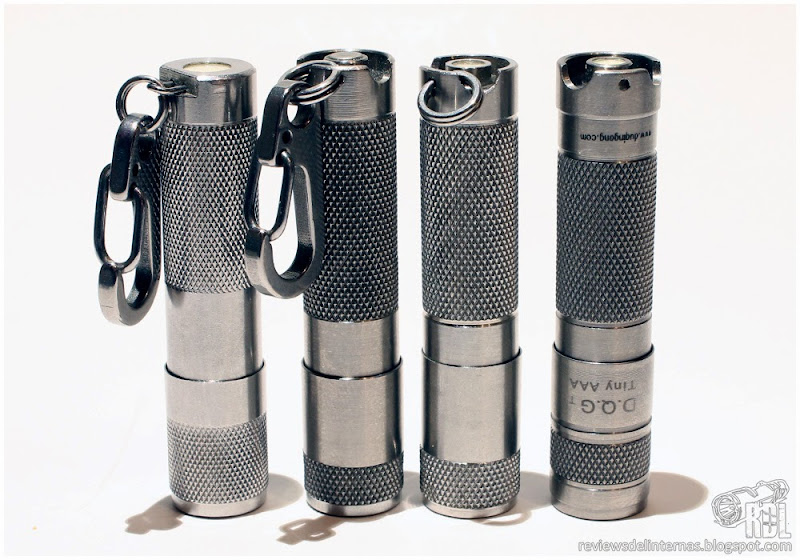
DQG III • DQG Ti • DQG IV • DQG Ti II
USER INTERFACE:
The main features of the interface are maintained, with two modes in ascending order without memory. The selection of modes is by achieved by twisty, and thanks to the rough knurled head area this is done conveniently with one hand.
- On/Off and mode selection: Simply tighten the head to close the circuit and turn on the flashlight in low mode. If we turn off and on quickly the flashlight starts now in High mode.
Which is undoubtedly the greatest innovation introduced in this DQG Ti II in compatibility now with 10440 rechargeable lithium batteries (Li -Ion). Keep in mind that a battery with a similar AAA positive top is necessary because if you try to use a battery with flat top or positive oversized in diameter reverse polarity protector (foam lining visible components face of the driver) will prevent proper operation. The length of the battery is not a problem as the contact point system does not require physical contact between the circuit and the profile of the threads, so that we can even make it work with 10440 protected batteries, usually way longer than unprotected.
In my case, I used a flat -top 10440 batteries to which I added a tiny blob of solder on the positive for correct operation, although protected Trustfire battery that came with the Mini - 03 also runs tight but OK.
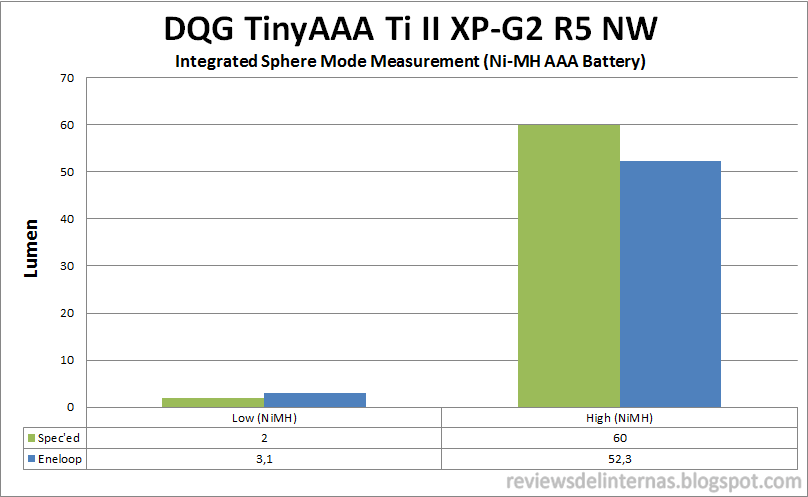
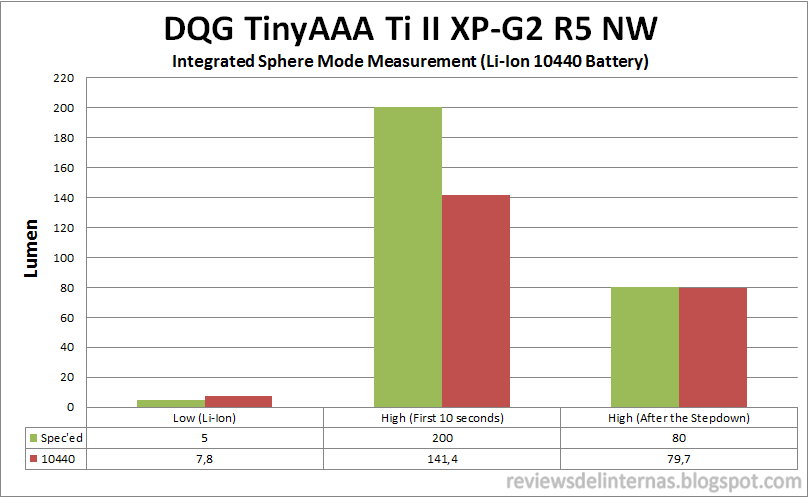
<span class=““here”:[DIY] Esfera integradora con función datalogger - ForoLinternas - Foro sobre linternas y tecnología LED. details More point. switch after seconds 120 and 30 between of reading highest the of value a using FL1”:Estándares ANSI NEMA FL1 - ForoLinternas - Foro sobre linternas y tecnología LED NEMA “ANSI procedure the following taken are measurements All”>
The usual test measurement modes with Eneloop shows a more than acceptable concordance to the specifications provided by the vendor, considering that the unit I’m measuring has a XP -G2 R5 NW, with typically has 10% less performance than the same bin in CW . For measurements with Li -ion, you can notice a real difference only with the maximum performance specified.
PERFORMANCE:
Let us first compare the runtime vs output of this new Ti II compared with data obtained in the test of DQG IV:
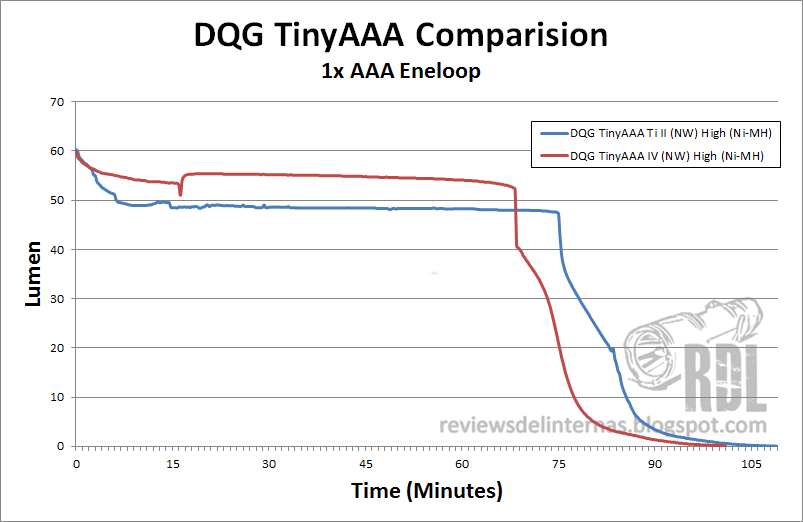
Both torches equipped supposedly with the same LED and same bin and therefore should provide similar performance, but in practice we can observe as the new Ti II still having an equal maximum, it is stabilized 5LM below the TinyAAA IV. We could easily appeal to the infamous Chinese Lottery, but shows more than five minutes stabilized linear output that the new Ti II, makes me think that changes in the driver are responsible for this phenomenon.
With a 10440 , flashlight offers similar performance, keeping the two modes but now the High mode offers 10 seconds of 140LM ( 270% higher performance than Ni-MH) with a time-controlled stepdown , lowering the regulated output 80LM .
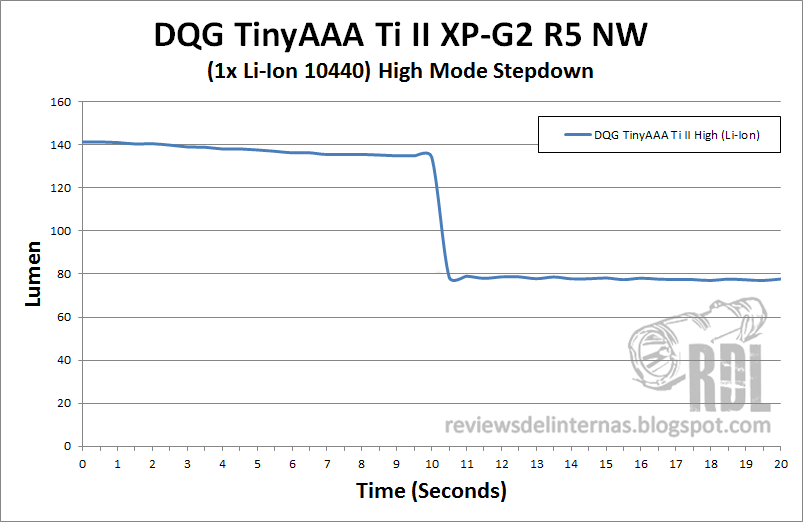
You can clearly see how the 140LM seem to be perfectly regulated within the 10 seconds , with no hint of the classic directdrive-like curve to the with sharp drop in the first few seconds , so thereby you see that pretty current regulation is maintained in both phases .
BEAM PROFILE:
Being the same lens, the beam profile remains identical to the previous TinyAAA family:
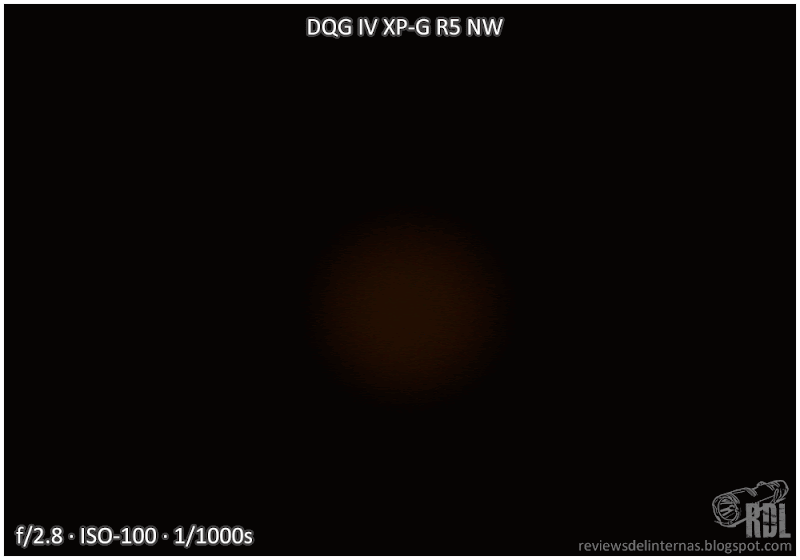
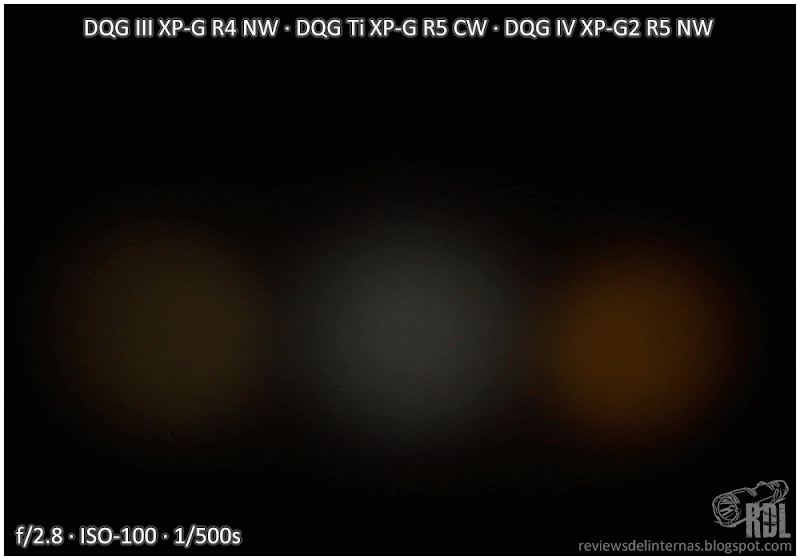

A massive flooding with a huge central spot and plenty of spills, ideal for indoor illumination or outdoors two-steps-ahead full flood light.
The tint of this XP -G2 R5 is 3B (1A for CW version), and has a very nice tone with characteristic natural color reminiscent to Mediterranean sunset light. We see that tone is identical to that found in the Steel TinyAAA IV, yet quite different from the equipped the DQG III NW.
PERSONAL CONCLUSION:
I have always been fascinated by the lightness and simplicity of DQG TinyAAA. A clearly personal character design which George, the brain behind these little gems, gives us the opportunity to enjoy. A personal project away from the dictatorship of the market, version after version improves and grows to share with the lucky owners his interpretation of the ideal flashlight from a personal point of view of its creator, regardless of the trends that large brands are subject to meet for its economic goals. Once again I cannot do anything but surrender to the obvious and, not without some sadness, uninstall my dear DQG IV from my keychain to make room for this new gem to accompany me from now on at all hours of the day.
Negatives: The only thing that could be discussed is the price of the light, somewhat high when compared to other similar flashlights from the mass market. Obviously, it will always be cheaper having lunch (using week offers or discount coupons) in McDonalds than in the good old restaurant in the neighborhood ![]()
Positives: Starting with the new exterior look , the new Ti II features some cosmetic changes that make it more attractive and sophisticated , but continues to maintain the simple and straightforward appearance that over recent years has characterized this family of tiny flashlights . The performance is set to fit almost perfectly coherent usage of a kind of these features a flashlight with a nice linear regulation. The absence of memory can be seen as a negative point by some people, but from a practical point of view I always thought that in this segment is a positive, as long as the two modes are in ascending order, always allowing us to assess whether it is really necessary to use the high mode for the task you’re performing, avoiding losing our visual adaptation to the dark while still helping us to save battery. The introduction of compatibility with 10440 rechargeable lithium batteries has been made in the best possible way, regulated in all modes , including the 10 second mini-turbo embebed in high mode.
The other positive aspects such as the ability to choose the tint, magnet or luminescent spot, are inherited from previous versions so I will not dwell further praising this new DQG, for me the PERFECT flashlight keychain.
